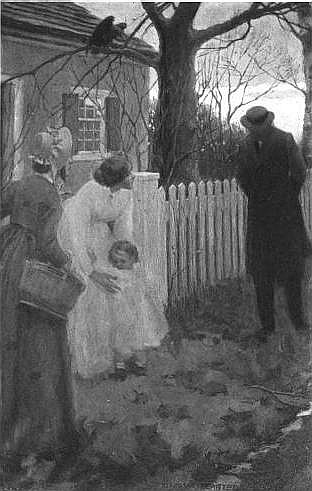
I have been engaged in family research for many years. My brothers and I set out on this time of discovery and it has turned into an on again off again affair for more than 30 years. We have encountered many interesting facts along the way like my 9th Great Grandfather Abraham Preble was one of the founders of the Town of Scituate Massachusetts and my 2nd cousin 8 times removed was the first Captain of the USS Constitution and made his fame fighting the Barbary Pirates off of Tripoli. But there are also many average folks like my Great Grandfather who fought in the Spanish American War and my Grand Aunt who became Superintendent of Schools in Japan after the Second World War. But there is one fascinating story that has made it from family lore to full blown history and that is the Legend of Handkerchief Moody.
There are two stories that go along with this legend.
In a letter dated January 15, 1851 written to Rear Admiral George Henry Preble, the Preble Family Historian, Mr. Alexander McIntire recounts the tail. [1]
In 1710 my 8th Great Grand Uncle Ebenezer Preble was a boy of 12 and was preparing to enter college at Harvard. His friend, Joseph Moody, who was 10 and was also preparing for college were playing with an old rusty horse pistol that they had found in the trash. The gun had been charged with powder and a ball years before it was thrown into the trash by someone in the family. Taking a break from their studies they found more powder and decided to amuse themselves by putting powder in the pan of the pistol and causing it to flash. Several hours passed and each boy took his turn with the pistol. At some point, the pistol fired whilst being held by young Joseph Moody and the ball struck Ebenezer Preble in the heart killing him immediately.
Ebenezer’s Father, Judge Abraham Preble tells the story a little differently. In his account, the boys were in the woods hunting deer and other wild animals. The two boys had been separated from each other at some time during the day and Joseph Moody heard a sound and saw movement from under the leaves and without hesitation he shot. When he moved the leaves he found his friend, Ebenezer Preble, mortally wounded.
Whichever story is true only history will know, but what took place after is what the amazing part of the story is.
Joseph Moody graduated from Harvard College in 1718 where he studied Divinity and the law. In 1725 he was elected Town Clerk of the Town of York Maine and served in that capacity until 1732 when he became minister of Second Parish in York it was during his tenure as pastor that things took on a decidedly different turn. Joseph Moody began wearing a black veil, tied in a knot above his head, and covering his face at all times.
In an essay from the Book, Mysterious New England Gail M. Potter writes: [2]
For six years he got along tolerably well with the saving of souls, while his wife took charge of temporal things. But when she died, the care of two worlds proved too much for him, and he fell into a state of deep melancholy. In this clouded condition, his once brilliant mind developed a pronounced phobia: no one must see his face. And so he presented himself to his congregation with his features masked in a black silk handkerchief. For weeks, wonder, speculation, and rumor churned with whirlwind intensity through the village. Was he demented? His sermons were too logical for that. Had he been scarred by an accident? If so, no chirurgeon knew of it. Had his eyes been weakened by working far into the night on his sermons? With no other plausible explanation, his parishioners convinced themselves that this was the true one.
Joseph Moody could never forgive himself for the killing of his friend, in both stories it was an accident, but nevertheless he could not bring himself to find forgiveness. Perhaps it was his grief over the loss of his friend come back to haunt him after all of those years.
This eventually proved too much for him and he abandoned the pulpit and move in with another family. He would supply his father’s pulpit from time to time bur for the most part he had withdrawn from public life.
In 1770, at the time of his death he revealed to a fellow clergyman why he wore the veil, it was in fact because of the guilt he felt about the killing of his friend, according to the story written by Gail Potter I quoted above, “during a hunting accident.” He hid the fact that he had done this and the town’s folk believed that Ebenezer had been killed by Indians. Not an uncommon occurrence in those days. For years the face of young Ebenezer had haunted Joseph until he could not take it anymore and he, as he said in his dying breath, “put a veil between myself and the world.”
His request was granted and the veil was over his face as he lies in the coffin that would take him to his final resting place.
The Poet Nathaniel Hawthorne would write a short story called the Minister’s Black Veil based on the story of Handkerchief Moody.
[1] Preble, George Henry, The First Three Generations of Prebles in America, David Clapp & Son 1868
[2] Potter, Gail M., The Legend of Handkerchief Moody, Mysterious New England, Yankee Books, 1971

Interesting. My family came over in the late 1800s according to my mom. I am not sure from what part of scotland/Ireland. That much is a mystery for us. At least he had the penance in his soul for what he did.